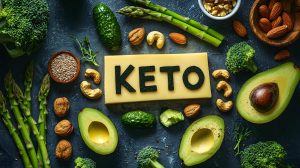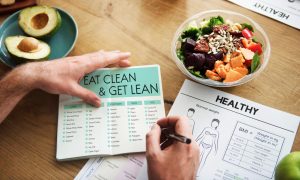
Keto for Beginners: The Do’s and Don’ts You Need to Know
The ketogenic diet, commonly known as the keto diet, has become a popular choice for those looking to lose weight and improve overall health. The main principle behind the keto diet is reducing carbohydrate intake significantly while increasing fat consumption. This forces your body into a metabolic state known as ketosis, where fat becomes the primary source of energy. If you’re a beginner considering this diet, it’s essential to understand what to eat and what to avoid to ensure the best results.
What is the Keto Diet?

The keto diet is a high-fat, low-carbohydrate eating plan that switches your body’s fuel source from glucose (derived from carbohydrates) to fat. When your body enters ketosis, it becomes more efficient at burning fat, which can aid in weight loss. A standard keto diet typically follows this macronutrient breakdown:
- Fats: 70-75%
- Proteins: 20-25%
- Carbohydrates: 5-10%
This dramatic shift in macronutrients is what makes the keto diet effective, but it also requires careful planning.
What to Eat on the Keto Diet

To succeed on the keto diet, you need to choose the right kinds of food. Here’s a list of keto-friendly foods that should form the foundation of your meals:
1. Healthy Fats
Healthy fats are crucial on a keto diet. They should make up most of your caloric intake. Opt for:
- Avocados: Rich in healthy fats and fiber.
- Olive Oil: Great for cooking and salads.
- Coconut Oil: Contains MCTs that help boost ketone production.
- Butter and Ghee: High in fat and low in carbs.
- Nuts and Seeds: Almonds, chia seeds, and flaxseeds are low-carb and rich in healthy fats.
2. Protein Sources
While keto is a high-fat diet, moderate protein intake is important for muscle maintenance. Include:
- Meat: Beef, lamb, and poultry (especially fatty cuts).
- Fish: Fatty fish like salmon, mackerel, and sardines are ideal for keto.
- Eggs: Nutrient-dense with minimal carbs, eggs are versatile and keto-friendly.
3. Low-Carb Vegetables
Vegetables are key for providing essential nutrients without spiking carb intake. Consider:
- Leafy Greens: Spinach, kale, and arugula.
- Cruciferous Vegetables: Broccoli, cauliflower, and Brussels sprouts.
- Zucchini and Eggplant: Low-carb and great for adding bulk to meals.
4. Dairy
In moderation, dairy can be part of a keto diet. Focus on:
- Full-fat Cheese: Hard cheeses like cheddar and Parmesan.
- Heavy Cream: Perfect for coffee or keto desserts.
- Greek Yogurt (Full-Fat): A great choice in moderation.
5. Berries (In Moderation)
Most fruits are too high in carbs for the keto diet, but a small portion of low-glycemic berries can be enjoyed, including:
- Strawberries, raspberries, and blackberries.
What to Avoid on the Keto Diet

Avoiding the wrong foods is just as important as eating the right ones. Here’s what you should steer clear of:
1. High-Carb Foods
These foods should be avoided to maintain ketosis:
- Grains and Starches: Bread, pasta, rice, and cereals.
- Legumes: Beans, lentils, and chickpeas.
- Sugary Foods: Candy, baked goods, sodas, and fruit juices.
2. Most Fruits
While berries can be eaten in moderation, many fruits are too high in carbs:
- Bananas, apples, and oranges.
- Dried fruits: Raisins, dates, and others.
3. Processed Foods
Avoid processed foods, as they can contain hidden carbs and unhealthy fats:
- Processed meats like hot dogs and deli meats.
- Pre-packaged keto snacks that may have artificial sweeteners or hidden sugars.
4. Alcohol
Alcohol can interfere with ketosis and weight loss. Avoid:
- Beer, sweet wines, and sugary mixed drinks. If you want alcohol, opt for dry wines or spirits like vodka or whiskey in moderation.
Tips for Success on the Keto Diet

Here are some helpful tips to ensure your success on the keto diet:
1. Plan Your Meals
Meal planning helps ensure you’re consuming the right balance of macronutrients while avoiding hidden carbs. Consider preparing keto-friendly snacks to avoid temptations.
2. Stay Hydrated
Ketosis can cause water loss, so staying hydrated is essential. Drink plenty of water to prevent dehydration and help balance electrolytes.
3. Monitor Your Macros
Tracking your daily intake of fats, proteins, and carbs is important for maintaining ketosis. Use apps like MyFitnessPal or Carb Manager to stay on track.
4. Be Aware of Keto Flu
When starting the keto diet, you may experience symptoms like fatigue, headaches, or irritability. These are common as your body adjusts to burning fat for energy. Ensure you’re getting enough electrolytes to ease these symptoms.
5. Be Patient
It can take a few days or even weeks for your body to fully transition into ketosis. Patience and consistency are key to achieving long-term success on the keto diet.
Summary
The keto diet can be an effective tool for weight loss and improved energy levels, but it requires careful planning and dedication. By eating the right foods and avoiding high-carb items, you can experience the many benefits of this diet. Remember, consistency and preparation are the keys to success, and with time, the keto diet can help you achieve your health and fitness goals.
FAQ for Keto Diet for Beginners
1. What is the keto diet?
The keto diet is a high-fat, low-carb eating plan that shifts your body from using carbs as its primary source of energy to burning fat, putting your body in a state called ketosis.
2. How long does it take to enter ketosis?
It typically takes 2-4 days for most people to enter ketosis, depending on factors like diet, exercise, and metabolic rate.
3. Can I eat fruits on the keto diet?
Most fruits are high in sugar and carbs, making them unsuitable for the keto diet. However, small portions of low-carb fruits like berries can be consumed in moderation.
4. Is the keto diet safe for everyone?
While the keto diet is effective for many, it may not be suitable for people with certain health conditions. It’s always a good idea to consult with a healthcare professional before starting any new diet.




